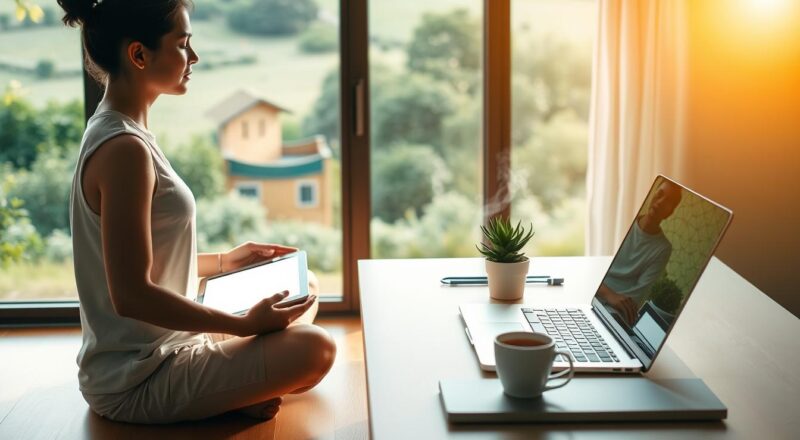In today’s world, technology and our mental health are closely linked. Finding a good balance with tech is important for our well-being. Strategies for digital wellness help us use technology in a healthy way.
Tech can be a great tool, giving us knowledge and helping us connect with others. But to keep it positive, we need to use it wisely. By knowing when to take a break, we can make tech work for us, not against us.
It’s important to avoid too much screen time, ensure good sleep, and choose online content that’s good for us. Let’s learn how to create a tech-friendly lifestyle that meets our needs in this digital era.
- Key Takeaways
- The Paradox of Tech and Mental Health
- Exploring the Positive Impacts of Technology on Mental Well-Being
- The Dark Side of Technology Usage and Mental Health
- Maintaining a Healthy Tech-Life Balance
- Strategies for Digital Wellness
- Tech and Mental Health Balance
- Embracing Mindfulness Practices in the Digital Age
- The Role of Digital Tools in Managing Mental Health
- Addressing Sleep Disruption from Tech Use
- Finding Support and Connection in the Digital Realm
- Personal Stories: Real-life Challenges and Triumphs
- Conclusion
- FAQ
- How can we maintain a healthy balance between technology use and mental well-being?
- What are the positive impacts of technology on mental health?
- How can social media negatively impact our mental health?
- What strategies can we use to combat the negative effects of digital overload?
- How do mindfulness apps contribute to mental well-being?
- How can we incorporate mindful tech usage into our daily life?
- What role do digital tools play in managing mental health?
- How can technology-induced sleep disruption be addressed?
- In what ways do online communities and teletherapy provide mental health support?
- How can personal narratives help others navigate their relationship with technology and mental health?
Key Takeaways
- Embrace digital wellness strategies to optimize interactions with technology
- Achieve a balanced tech and mental health relationship through mindful use
- Recognize the potential of technology to support mental health
- Be aware of the signs of digital fatigue and take steps to alleviate them
- Develop habits for minimizing sleep disruption due to late-night tech use
- Seek harmony in the digital world for a more fulfilling and peaceful life
The Paradox of Tech and Mental Health
In our fast world, the link between technology usage and mental health presents challenges and chances. Digital tools give us great access to info and friends, which helps our minds. Yet, they can also make us feel swamped and stressed, highlighting the importance of managing screen time for mental health right.
Understanding the Double-Edged Sword
Looking closely at technology usage and mental health, we find it’s not just about screen time. It’s also about our activities online. Easy digital access can mean more time on devices, creating loneliness or worry. So, finding balance in a tech-driven world needs effort and smart plans.
Navigating the Digital Landscape
Starting to balance means checking our digital habits and seeing the need for limits. We shouldn’t cut off tech entirely, but improve how we use it. This way of managing screen time for mental health helps us live healthier, happier lives.

Exploring the Positive Impacts of Technology on Mental Well-Being
Technology has greatly improved technology for mental health support. It offers mental health support online. Now, people can find therapy and wellness resources more easily. Mental health apps let individuals seek help in a private and easy way, breaking old barriers to care.
Tech has changed mental health care for the better. It adds tools like reminders and progress tracking to our daily wellness routines. This makes staying engaged easier. Plus, digital solutions fit everyone’s different lives and schedules all over the world.
Online communities and social media help mental health too. They give a place for people to meet, share stories, and support each other. This reduces loneliness and makes everyone feel included. So, mental health support becomes easier to find for everyone.
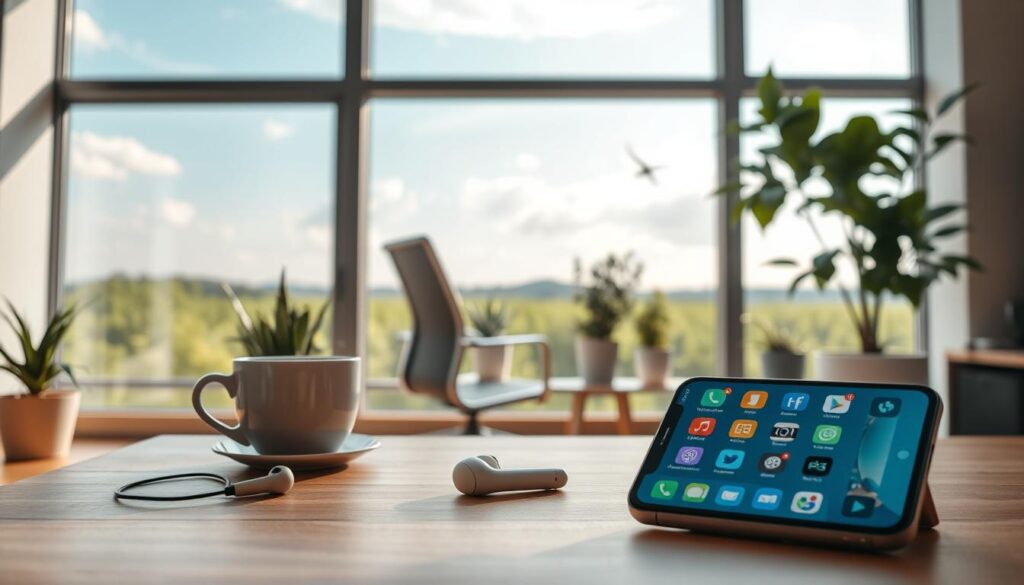
- Accessibility of professional mental health support from anywhere at any time
- Anonymous and non-judgmental platforms encouraging openness and honesty
- Resources for emergency situations, providing immediate assistance
Looking at these tools and platforms, it’s easy to see the value of technology for mental health support. It helps promote better mental well-being today. With technology, more people can begin and keep up their mental health recovery using the right tools anytime.
The Dark Side of Technology Usage and Mental Health
Technology can improve our lives but also harm our mental health. Being always online and the constant flow of information can hurt us emotionally and mentally. Social media makes it worse by making us compare our lives with others. This makes us feel bad about ourselves. Solving this issue can help us use technology in a way that’s good for our mental health.

Social Media and Comparison Culture
Social media shows perfect images that can make us feel bad about ourselves. People only share their best moments, making us feel less successful. This comparison hurts our self-esteem and can lead to anxiety and depression. We need to understand the difference between real life and social media. This can help reduce the harm and improve our mental well-being.
Digital Overload and Its Effects
Being always connected has its good and bad sides. Technology lets us keep in touch with loved ones and stay informed. But, too many notifications and the need to always be available can overwhelm us. This digital overload lowers our focus and increases stress. It has a big impact on our mental health.
We need to find a balance in using technology and understand how it affects our mental health. Tools that promote emotional wellness can help. They should help us feel better, not worse. Dealing with social media comparison and digital overload is key to healthier technology use.
Maintaining a Healthy Tech-Life Balance
In today’s world, it’s important to keep a good balance between our tech use and daily life. Finding the right mix can make us feel happier and more at peace. We can start by watching how much time we spend on screens and trying out tech mindfulness.
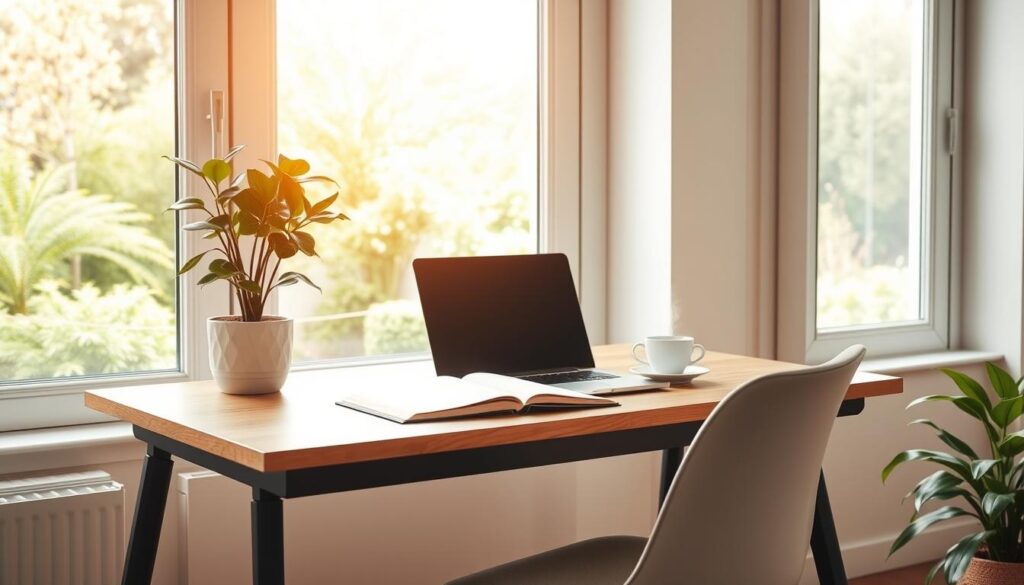
It’s key to create rules for when we use electronics, especially before sleeping. Cutting down on screen time at night helps us sleep better. If we take breaks and have times when we don’t use gadgets at all, our brains get a chance to rest from all the info coming at us.
Choosing to talk to people in person instead of texting or calling is also a good idea. Meeting face-to-face can create deeper connections and make us feel closer to others. It’s a healthy choice for our hearts and minds.
Finally, sometimes we might need extra help dealing with how tech affects our emotions. Talking to a counselor or therapist can be a big step in the right direction. It shows we’re serious about keeping our minds healthy while living in a tech-heavy world.
| Strategy | Benefits |
|---|---|
| Limiting screen time | Improves sleep, reduces eye strain |
| Regular tech breaks | Decreases stress, increases productivity |
| Face-to-face interactions | Enhances emotional connections, builds relationships |
| Seeking professional support | Provides strategies for coping, promotes mental health |
Strategies for Digital Wellness
It’s crucial to follow digital wellness tips today. Using digital detox strategies and limits on device use can help us balance tech and life. These steps improve our mental well-being and bring balance between tech and mental health.
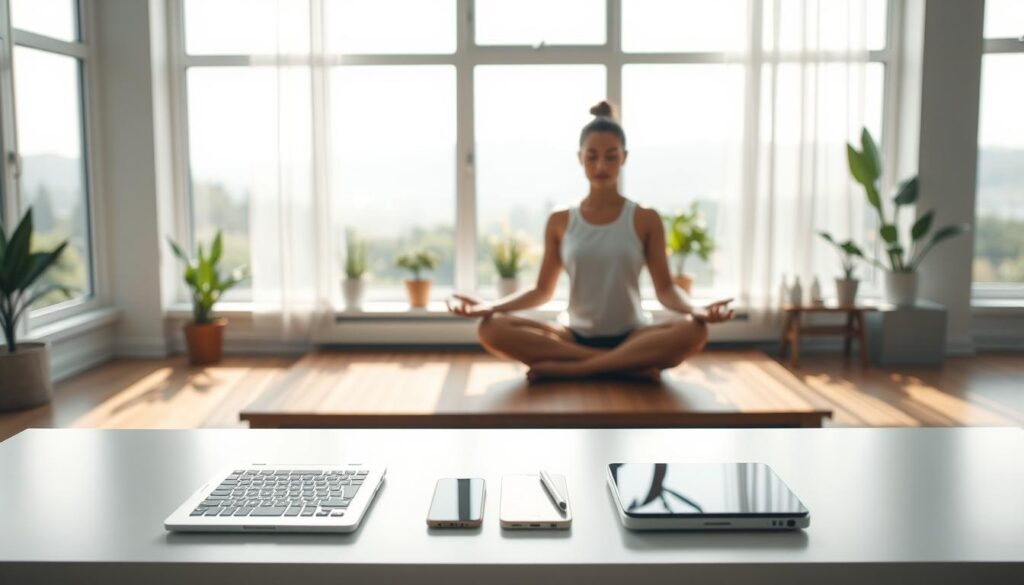
Digital detox strategies mean taking breaks from tech. Setting aside tech-free times during meals and before bed improves our lives.
Implementing Digital Detoxes
- Scheduling specific hours each day without digital devices.
- Avoiding screens at least one hour before sleep to improve sleep quality.
- Engaging in screen-free hobbies that help in mental rejuvenation.
Establishing Boundaries with Devices
- Creating no-gadget zones in personal spaces like bedrooms and dining areas.
- Utilizing app limits on smartphones to reduce unnecessary screen time.
- Setting up specific times for checking emails and social media to minimize constant connectivity.
Using these digital wellness tips helps balance tech and mental health. It also promotes long-term health in our tech-heavy world.
Tech and Mental Health Balance
Finding balance between technology and mental health is key in our digital world. We aim to use digital tools to better our mental health, not to depend on them. Our goal is to make technology a helper for our mental health progress.
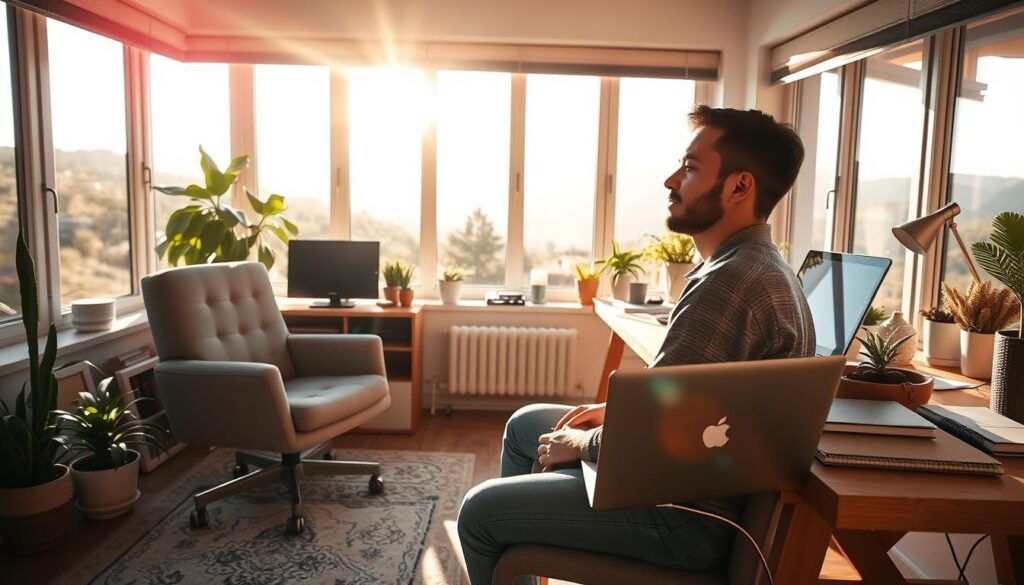
Using digital tools that boost our mental health is vital. These tools can be apps for meditation or managing stress. Yet, their real worth comes from using them smartly in our day, not letting them take over.
We make sure to have time away from screens. In this time, we focus on face-to-face social time. It’s about making rules for ourselves. This helps us not just cut down screen time but also make our digital time more valuable.
- Use meditation apps to begin each morning with a grounding practice.
- Allocate specific times for checking emails and social media to avoid constant notifications.
- Engage in weekly digital detoxes to refresh our mental state and improve our focus.
Our goal to maintain mental wellness in this tech era is woven into our daily routines. This way, we get the best out of technology for our mental health, without letting it control us.
Embracing Mindfulness Practices in the Digital Age
Today’s digital world is changing fast, and it’s important to keep our mental health in check. Mindful tech practices help us use technology in ways that improve our mental wellbeing. Using mindfulness apps is a key way to make technology work for us, promoting relax and overall health.
Read more: Best Microlearning Platforms for Quick Upskilling
Read more: Memory centric Computing Systems: Whats Old Is New Again
Read more: How to Set Up a Remote Office on a Budget
Mindfulness Apps and Their Benefits
Apps like Calm and Headspace are now big parts of how we manage our day. They offer meditation, breathing guides, and stories to help us sleep. These apps have a big effect, helping us stress less and handle our feelings better.
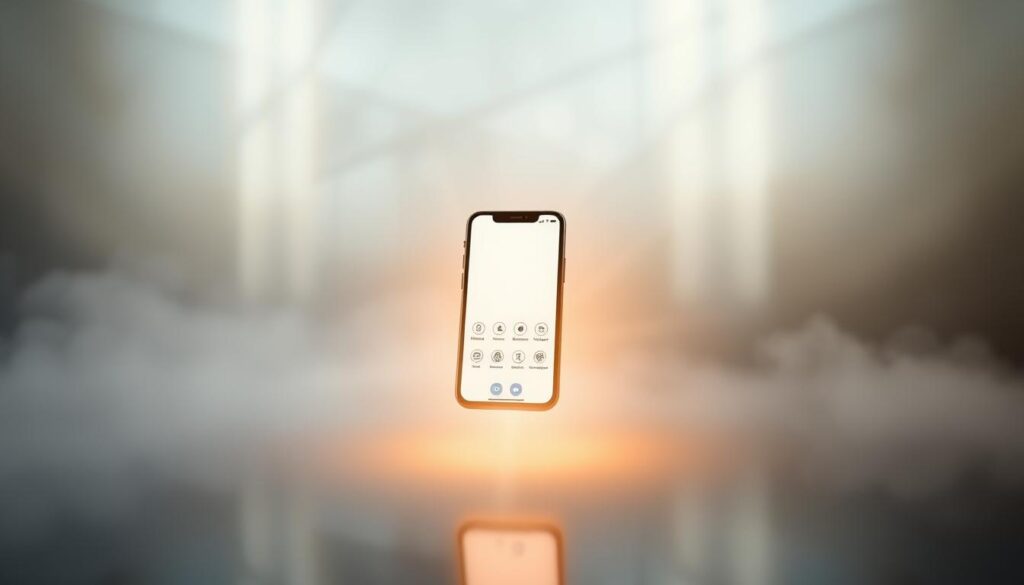
Incorporating Mindful Tech Usage into Daily Life
Using tech mindfully means engaging with our devices on purpose. It’s about staying in the moment and letting technology add to our life, not take away. We aim to limit screen time and value real-life moments to stay mentally healthy.
| Feature | Benefits |
|---|---|
| Guided Meditation | Reduces stress, improves concentration |
| Sleep Stories | Supports healthier sleep patterns |
| Daily Reminders | Encourages consistent mindfulness practice |
| Breathing Exercises | Enhances respiratory health, calms the mind |
Adding mindfulness practices with technology into our life brings lots of good. We enjoy tech’s perks without letting it hurt our mental health. This careful approach lets us benefit from new tech without feeling overwhelmed.
The Role of Digital Tools in Managing Mental Health
In our fast-moving digital era, technology and mental health support have merged. They empower us to take control of our emotional wellness. A wide variety of mental health apps and tools lead this change, making help more reachable than ever.
These tools include apps to lessen anxiety, improve mood, and help relax. The growth of online resources for mental health is crucial. They provide therapy guidance and community support regardless of where you are, often at a lower cost.
| Tool Type | Description | Benefits |
|---|---|---|
| Therapeutic Apps | Apps providing guided therapy sessions | Accessible mental health support on-the-go |
| Relaxation Apps | Features include meditation, breathing exercises | Helps in reducing stress and anxiety levels |
| Wellness Trackers | Monitor emotional and mental health status | Encourages mindfulness and self-awareness |
Using mental health apps and tools in our daily lives leads to stronger mental health. This blend of technology and mental health support makes mental health resources accessible to more people. It tailors the journey to better mental health, making it more inviting and easier to follow.
Addressing Sleep Disruption from Tech Use
In today’s world, balancing screen time and health is crucial. The effect of blue light on sleep is especially important. Our use of screens at night can mess up our sleep. Luckily, knowing how to manage this helps us use tech wisely while staying healthy.
Blue light from screens can mess with our sleep hormones. It can make melatonin, which helps us sleep, show up later than it should. This might make it hard to fall asleep, keep us from sleeping well, or make us wake up tired. Solving this problem helps us sleep better and feel overall healthier.
Blue Light Effects on Sleep Patterns
Making small changes in the evening can lessen blue light’s impact. Dimming screens and using filters help. Choosing to read a book instead of looking at a phone can also improve sleep. This helps our bodies get ready for a good night’s sleep.
Practices for Healthier Sleep Habits
- Set a digital curfew an hour before bed to cut down on blue light.
- Wear blue-light-blocking glasses when using devices at night.
- Have a relaxing bedtime routine, like meditation or music, without screens.
Sticking to these habits can greatly improve your sleep. As we deal with tech and health, small changes in how we use devices can have big benefits.
Finding Support and Connection in the Digital Realm
Today, everywhere we look, digital tech plays a big part in our lives. The growth of online therapy and support networks online has changed how we get mental health help. These online platforms are key in spreading mental health awareness and making sure help is available to everyone, no matter where they are.
Online therapy helps overcome usual barriers like stigma or being far from professionals. It’s private and easy to use, bringing mental health care closer to those in far-off or underserved places.
On the other hand, support networks online are vital for creating communities. These communities are built on shared experiences. Virtual support groups offer a space for storytellings, resource sharing, and emotional support at all hours. Here, individuals find others who get what they’re going through, offering advice and comfort.
Furthermore, these online places help to promote widespread mental health awareness. They’re centers for spreading information and resources, helping to clear up misunderstandings about mental health issues and improving public understanding.
These digital options are incredibly valuable. They not only help people manage their own mental health challenges but also promote community health. They do this by creating knowledgeable, supportive networks that are reachable from anywhere around the globe.
In our digital times, it’s comforting to see technology bringing us the support we need. It turns challenges into chances for growth and connecting with others.
Personal Stories: Real-life Challenges and Triumphs
In today’s world, we hear powerful stories about people using self-care tools, finding mental health resources, and exploring their own personal well-being journeys. These stories show us the real side of mixing technology with our daily routines. They open our eyes to how it affects our mental health.
One story is about a teacher who discovered that mindfulness apps helped ease her stress throughout the school year. Her experience proves how important digital self-care tools are for dealing with daily stress. Another tale is about a veteran who turned to online forums to meet other ex-military members, which highlights how technology builds essential support networks.
These accounts share more than just struggles. They also show victories, emphasizing that technology can help people from very different walks of life. By sharing these stories, we build a community that learns from one another. This helps us understand how to keep our digital health in check in our complex world.
“It’s not about the technology itself, but how we use it to foster our well-being.”
To show the diversity in these journeys, we’ve prepared a table below. It compares different ways people have mixed technology with their daily lives. These stories show various successes and lessons learned.
| Individual | Challenges Faced | Tools Used | Outcome |
|---|---|---|---|
| High School Teacher | Stress management during busy school seasons | Mindfulness apps | Reduced stress and improved personal well-being |
| Veteran | Isolation and lack of community post-service | Online veteran forums | Enhanced sense of community and mental support |
These personal stories not only show the strength of technology in our self-care and mental health efforts but also highlight why sharing these moments matters. They widen our shared knowledge and techniques for thriving personally in the digital era.
Conclusion
Reflecting on technology and mental health, we see it’s not about avoiding digital life. It’s about using it wisely and with awareness. The journey highlights not only the risks of too much tech use but also how mindful use can improve well-being. Smart use of digital tools can help us manage our mental health better.
Our discussions show a complex picture. Technology can be as good as the limits we set on it. It helps us connect with others and find peace through mindfulness apps. Yet, it’s a tool we must handle carefully to stay balanced and calm. We aim to create a harmony between our screens and mental health in our daily lives.
In conclusion, improving well-being with technology is achievable with the right approach. As people living in a digital age, it’s vital to balance tech and life. The ideas we’ve talked about act as a guide. They help us navigate the digital world safely, letting us benefit from it without feeling overwhelmed.
Outbound Links
-
https://www.headspace.com – Mindfulness and meditation app
-
https://www.calm.com – Sleep and relaxation app
-
https://www.talkspace.com – Online therapy platform
-
https://adaa.org – Anxiety & Depression Association of America
FAQ
How can we maintain a healthy balance between technology use and mental well-being?
What are the positive impacts of technology on mental health?
How can social media negatively impact our mental health?
What strategies can we use to combat the negative effects of digital overload?
How do mindfulness apps contribute to mental well-being?
How can we incorporate mindful tech usage into our daily life?
What role do digital tools play in managing mental health?
How can technology-induced sleep disruption be addressed?
In what ways do online communities and teletherapy provide mental health support?
How can personal narratives help others navigate their relationship with technology and mental health?
Get in Touch with SJ Articles
Read more: Automated Machine Learning Guide 2025
Read more: Holographic Displays: Future of Communication is Here
Read more: 3D Printing in 2025: Innovations, Applications, and Future Insights


